Adults enjoy gardening for the outdoor time, exercise, inspiration, relaxation, healthy homegrown food, fragrant blooms, a sense of well-being and accomplishment, and probably many other delightful reasons.
Guess what?
Children can enjoy the same benefits when you design a growing space that’s suited to their abilities and interests.
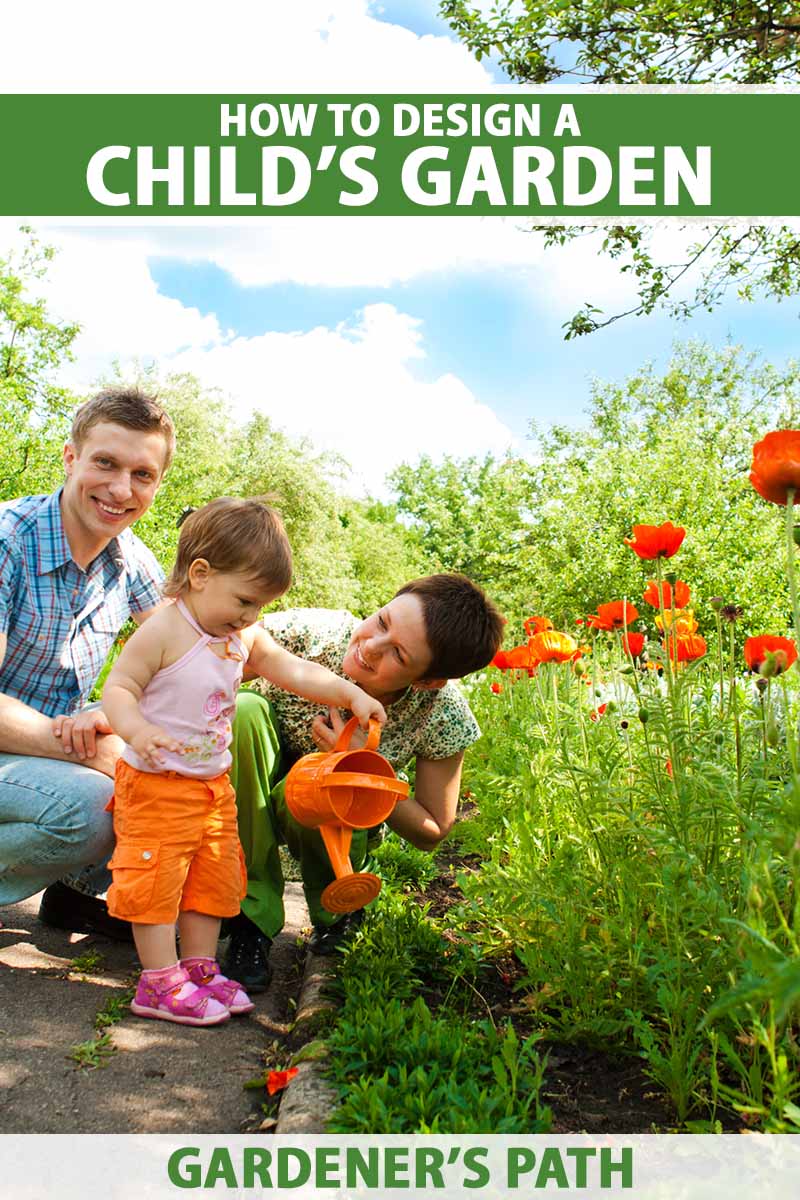
We link to vendors to help you find relevant products. If you buy from one of our links, we may earn a commission.
In Your Go-To Guide for Gardening with Children, we offer a range of activities for family fun.
In this article, we offer five tips to help you create a garden that the young people at your house can call their own.
Here’s the lineup:
What You’ll Learn
Let’s get started!
Brainstorm Together
As you begin to envision your child or children sowing and reaping, think about what you hope they will experience.
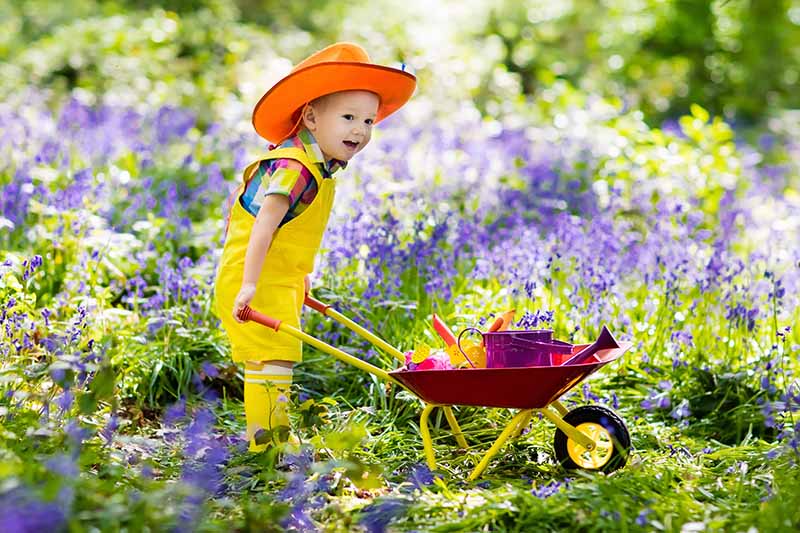
Are you seeing family fun and photo ops with a rambunctious preschooler who is developing gross motor skills? Can you picture mounds of muddy soil and a splashing watering can?
Or, do you have preteens you’d like to encourage to spend more time outdoors? Are there veggies growing? Is there laughter, and do the barbecued hamburgers have homegrown lettuce and tomatoes on top?
Your vision of the young ones at your house actively engaged in growing and having fun is the first step in the design process.
Check out our list of best children’s gardening books and read with your kids to get them in the mood for the upcoming venture.
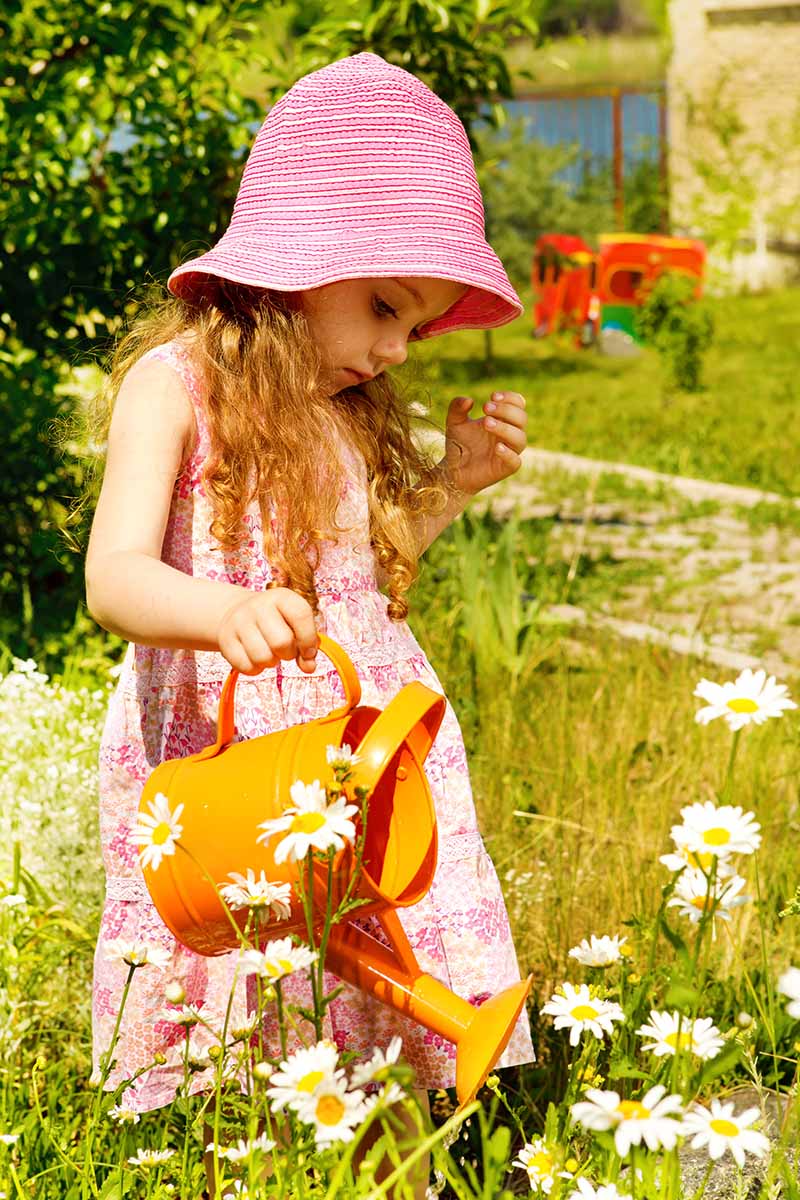
Walk around the yard and see where the sun shines for most of the day and where it’s shady. Learn about plants that prefer each exposure.
If you don’t have yard space, gather containers to place on a patio.
For cultivation on a balcony at a rental, be sure to check with the management about rules and weight requirements. Maybe older kids can make inquiries themselves.
Invite the kids to plan with you. Keep them interested through active participation in all phases of the experience.
Have them draw pictures of what an amazing garden might look like, and do your best to incorporate as many of their ideas as you can.
If they want Jack’s beanstalk, think along the lines of pole beans.
For a jungle, you might try tropical foliage around the patio.
Browse online and print catalogs, or visit a nursery, to make plant and/or seed selections.
Allow Ample Space
You may be surprised by how much room you’ll need for some plants, like zucchini and cucumbers, with a circle of foliage that spans two to three feet.
Read seed packets and descriptions of plants to determine not only cultural requirements like sun, soil, and water, but mature dimensions as well.
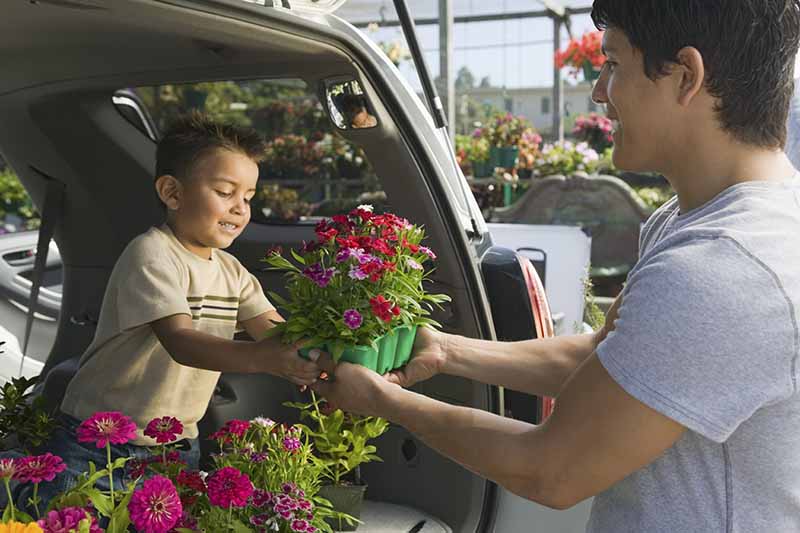
Help children choose plants that can fit into the space allotted to them for cultivation.
In addition to making sure the plants fit without overlapping each other, it’s helpful to allow an additional foot between plants so they are not stepped on as kids water, weed, check for signs of pests and disease, observe the growing process, and harvest edibles.
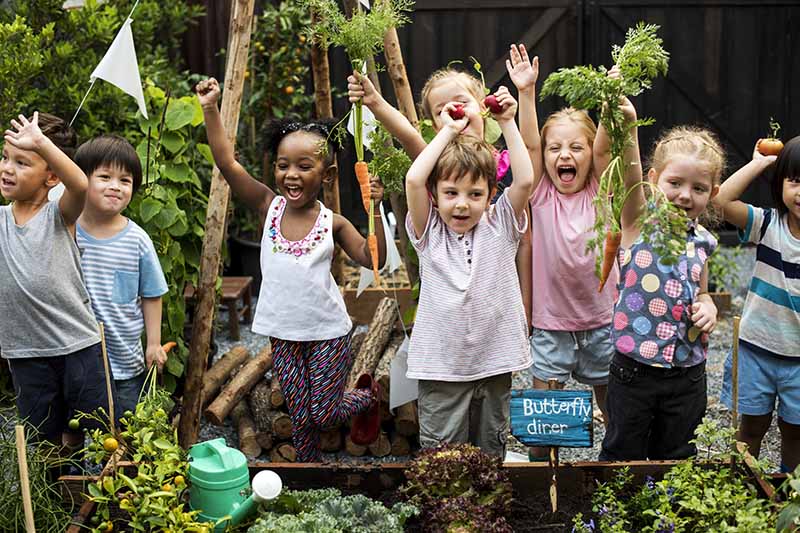
An alternative to in-ground growing that allows for easy access from all sides is narrow raised beds that children can walk completely around and reach across.
Where gardening in small spaces, add features to your growing area that make vertical growing an alternative, such as a trellis, and remember that container gardening is always an option.
Engage Their Senses
When designing an inviting growing space that children will enjoy, choose items that engage as many senses as possible.
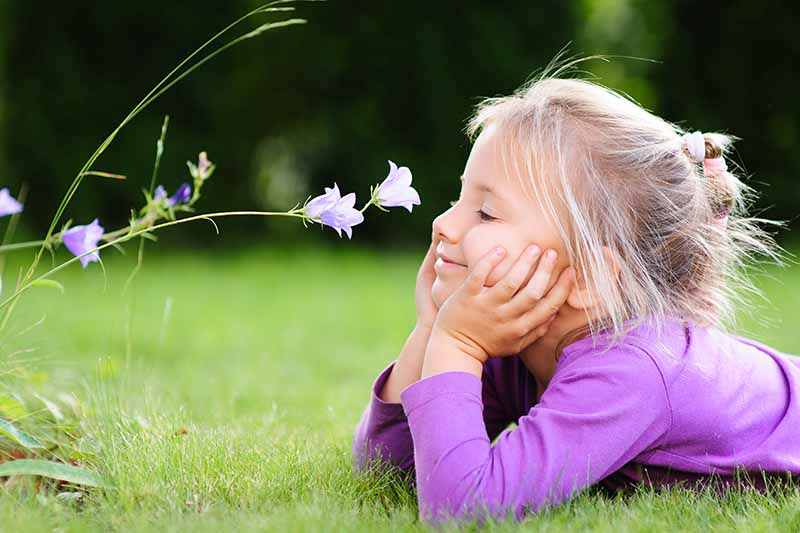
Here are some ideas:
Flowers with large, bright blooms, like sunflowers and zinnias.
Plants that are very fragrant like lavender, rosemary, and honeysuckle.
Fuzzy foliage such as lamb’s ears and the colorful blooms of celosia.
Add a bird feeder to attract songbirds and bring nature’s music into the setting.
Grow edibles like fruits, herbs, and vegetables that can be plucked, rinsed, and savored right in the summer sun.
Using multiple senses helps to make experiences memorable. Don’t forget to take pictures for “What I Did This Summer” school reports, and gifts for aunties and grandpas.
Make It Imaginative and Inviting
Make the yard space, kitchen, patio, or wherever the kids are growing a place that is comfortable and inviting.
Encourage young ones to relax and spend time tending flora by including accessories such as seating, stepping stones, and yard art.
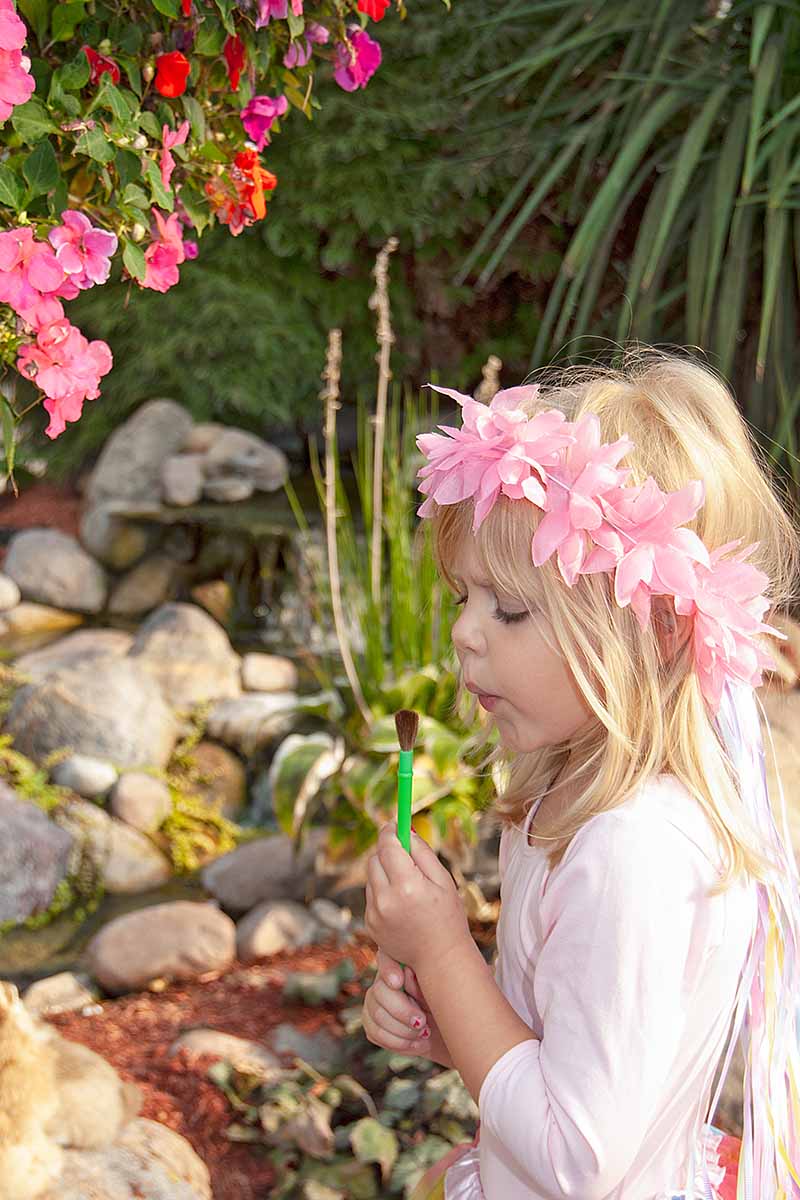
Incorporating play is essential, especially with the youngest children.
How about creating a magical fairyland with rings of stones, small blossoms, and winged fairy statues where your littlest ones can come dressed in their own fairy wings, carrying magic wands to sprinkle fairy dust and make the flowers grow?
A butterfly garden can easily be created with large flowers that specifically attract the lovely winged pollinators, like lobelia, milkweed, and verbena.
Include a birdbath. Fill the bottom with colorful glass marbles and an inch or two of water for the butterflies to refresh themselves as well.
And as the season progresses, help your kids keep track of the different species that visit your yard.
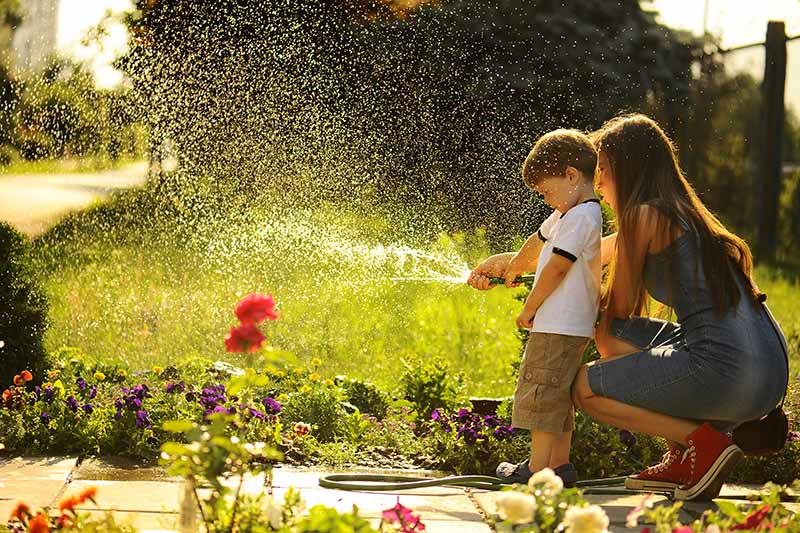
Sweet peas or green beans are fun to grow when you train them up bamboo poles arranged like a teepee. They’re great for hide and seek, and a little private time for an outdoor nap.
Divide a space into a tic-tac-toe board and have kids plant a different plant with a mature diameter of one foot or less in each square. This is called square foot gardening.
And then there’s the pizza garden. Help your child lay out a circular design and divide it into slices, with a different plant in each piece, like tomatoes, basil, and oregano.
Encourage your kids to come up with their own ideas!
Scale It Down
Children like child-sized things that they can handle with ease, so consider getting small hand tools like trowels, claws, and rakes just for them.
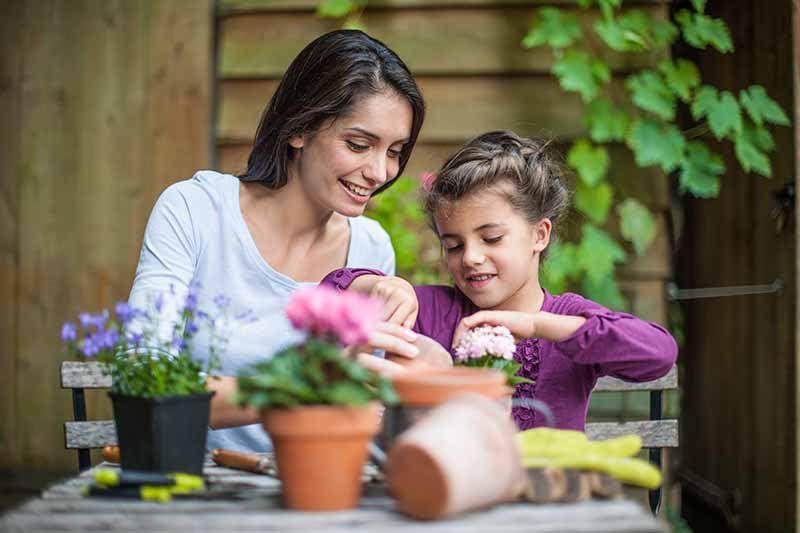
Give them small harvest baskets and watering cans, or use a product I’ve found to be extremely useful for kids, a lightweight, retractable hose made of fabric that is easy to drag from faucet to plot.

Flexi Hose, The Expandable Hose
At my house, I have Flexi Hose, The Expandable Hose, and it’s holding up well in its second year.
You can find Flexi Hose, The Expandable Hose from the Flexi Hose Store via Amazon.
And if you really want to scale things down, how about helping the kids grow miniature plant species that can be cultivated in-ground in the appropriate growing zones, or indoors in containers?
Please see our review of “Tiny Plants” by Leslie Halleck, an exciting how-to book.
And don’t forget about the terrarium, an enclosed collection of small plants that are easily cultivated indoors.
Make the Vision a Reality
When designing a child’s garden, take the abilities and interests of the kids into account, involve them in planning, give them as much space as you can, and get creative.
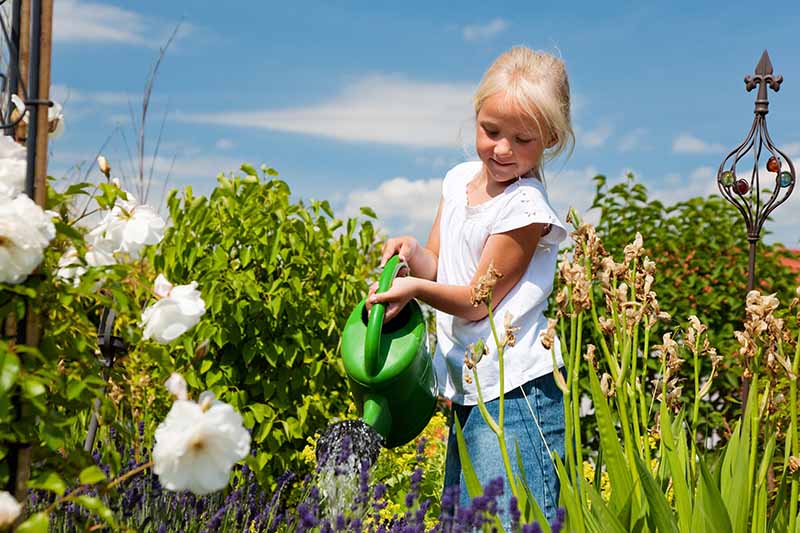
Supervise all activities for a safe experience. With the youngest children, it’s best to grow edible plants, to avoid exposure to the potential toxins contained in many ornamental species.
It’s time to put your gardening shoes on and take the design from vision to reality. Show the next generation how it’s done, and most of all, have fun!
What are some projects you’ve tried with your children in the garden? Let us know in the comments section below.
If you found these tips helpful, we recommend reading the following guides next: